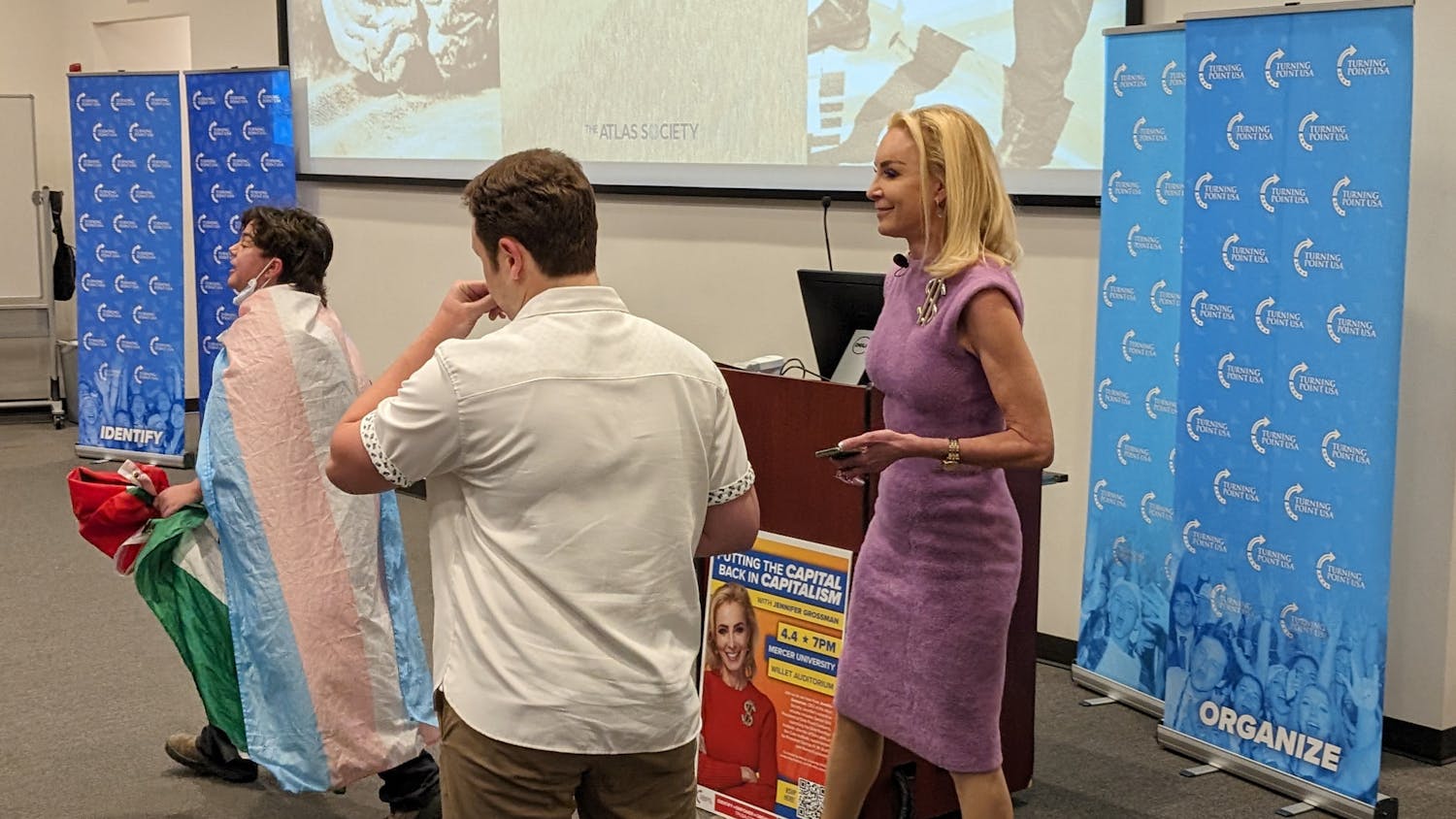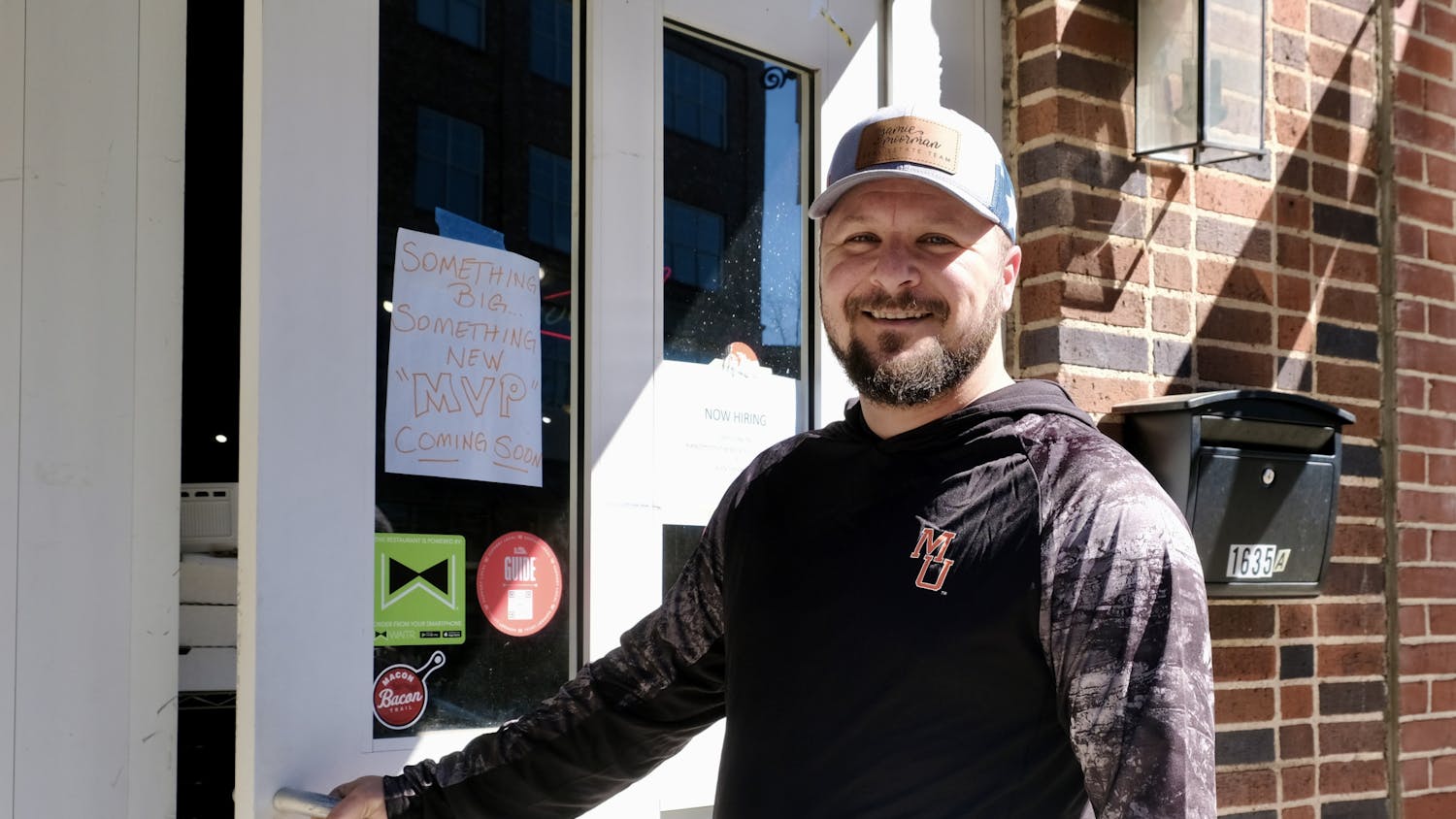The auditorium of the Willet Science Center was packed with people of all ages, from professors to students to children of professor. The crowd consisted of a variety of disciplines, not just science majors. A line snaked out from the left wall, where people placed their votes for a raffle: Who would win, Heroes or Villains?
The members of the American Chemical Society sported matching blue shirts and safety goggles. Their annual Demonstration Show commenced with a scripted but witty introduction that had the audience laughing in no time. The two entrances at the front of the auditorium were decorated with balloons and streamers, one red for villains, the other pink for heroes.
The first act of the show played a clip of Yzma from The Emperor’s New Groove, in which the villain revealed her evil plan to “turn Kuzco into a flea -- a harmless little flea. Then I’ll put that flea into a box, and I’ll put that box into another box, and I’ll mail that box to myself. Then I’ll smash the box with a hammer.” Kaydren Orcutt and JJ Lee of the chemical society had a much better plot.
They claimed to have turned Kuzco into a gummy bear, which they then dropped into a tube of potassium chloride. When the sugar of the gummy bear hit the potassium chloride, sparks flew in the form of a combustion reaction.
Next, Sarah Barnett and Kristian Taylor represented the Heroes as Elsa from Frozen. Just like Elsa could make crystals from thin air, the two chemistry majors demonstrated the crystallization of a super saturated solution. In a manner fitting to the crowd, dumbed down but not insulting, they explained the process of saturating a solution of water with salt, then heating the solution in order to dissolve more salt. When the solution cools, the salt is still dissolved, until a pipet with a crystal on the end entered the solution, causing the salt to recrystallize. A little difficult for the entire crowd to see, the recrystallization looked like a cloud in the mixture.
Though most of the audience would have had no suspicions, this project did not go quite as planned. “We all practiced five times before the show,” said Barnett. “Five times, the crystallization happened and looked like needles, extending to the surface of the flask -- not a cloud.” One hypothesis is that the room was too cold for the recrystallization.
Without any indication of a set-back, the show continued with the villains. Many Disney villains are associated with fire, particularly fire of different colors. For this experiment, the first two fires were blue and red, so colored due to the excited electrons that gave off different light. To demonstrate Scar’s green fire, however, the scientists burned boric acid.
Following Scar, the Evil Queen from Snow White took the screen, using her boiling cauldron to change the color of an apple. Demonstrating the color change, Utkarsh Parwal, Patrick McAlpin, and Hetu Shah set out multiple beakers of water with a universal indicator, which shows the pH balance of the solution. At neutral, the indicator was green. Parwal, with gloved hands, added dry ice (CO2 solid) to the water. The solution exploded with bubbles as the dry ice sublimed, changing from solid to gas, converting to carbonic acid as it hit the water. The carbonic acid turned the indicator red. To change the color back, the team added a universal base (NaOH or sodium hydroxide), which switched the color all the way to blue, then back to a neutral green.
The villains were winning at this point, by popular vote, so the heroes had to come back strong. Mary Poppins’ magic bag featured on the screen, and Hannah Batton and Akata Patel took the stage hoping to make the Evil Queen’s poisoned apple disappear into a magical bag. They dropped the styrofoam apple, technically polystyrene, into acetone, which dissolves the polystyrene into styrene. Unfortunately, the red paint on the styrofoam apples slowed the process, which made it even funnier when Batton turned to Patel and said, “Looks like the heroes have won this one!”
Finally, the villains got the last word, when a clip from Hercules showed the monster Hydra, whose head grows back triple when chopped off. The demonstration is called “elephant’s toothpaste,” in which a hydrogen peroxide, which decomposes slowly in water, was catalyzed by iodide, an enzyme that lowers the activation energy of the reaction between H2O2 and H2O. All that science jargon means that the mixture exploded into yellow foam, or what looked like elephant’s toothpaste.
The show as a whole was fun for everyone, with technical terms for the science majors and others interested, a humorous script for all ages, and multiple prizes from a raffle. Definitely recommended for next year.




